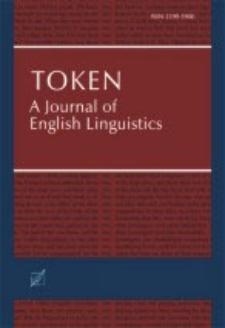Digital Library of the Jan Kochanowski University contains 13 233 digital objects
Object
Title: Corpus stylistics, classic children’s literature and the lexical field of laughter
Creator:
Group publication title:
Abstract:
This article draws upon data from the Historical Thesaurus of English (HTE) to explore, the lexical field of laughter in a corpus of thirteen children’s novels. The thirteen novels are all from the first ‘Golden Age’ of children’s literature in English, namely the late 19th and early 20th century. The study takes items in the HTE’s lexical domain of laughter and identifies the frequency, distribution and collocation of those items as they appear in the corpus. The results are discussed with reference to the ways in which different lexicalisations of laughter indicate the authorial stance towards childhood and also towards members of the communities represented in the novels. By indicating, through the representation of different types of laughter, the author’s preferred moral stance towards particular individuals and groups, the novels prompt young readers to accept or challenge modes of behaviour that exemplify or threaten communal values and good citizenship. The study thus demonstrates how readers of children’s literature from the ‘Golden Age’ are linguistically conditioned to reject negative forms of laughter and instead embrace positive forms, as they move from the undisciplined laughter of childhood to the relative restraint of adulthood.
Place of publishing:
Physical description:
ISSN:
Publisher:
Wydawnictwo Uniwersytetu Jana Kochanowskiego w Kielcach
Date issued:
Identifier:
oai:bibliotekacyfrowa.ujk.edu.pl:8003 doi:10.25951/4821
Language:
Is part of:
Token : A Journal of English Linguistics
Has part:
Type:
Access rights:
Format:
Object collections:
- JKU Digital Library > University Publishing
- JKU Digital Library > University Publishing > Serial publications
- JKU Digital Library > University Publishing > Serial publications > "Token : A Journal of English Linguistics"
Last modified:
Apr 4, 2025
In our library since:
Feb 13, 2023
Number of object content hits:
90
All available object's versions:
https://bibliotekacyfrowa.ujk.edu.pl/publication/4821
Show description in RDF format:
Show description in OAI-PMH format:
| Edition name | Date |
|---|---|
| Corbett, John; Li, Li, Corpus stylistics, classic children’s literatureand the lexical field of laughter | Apr 4, 2025 |

